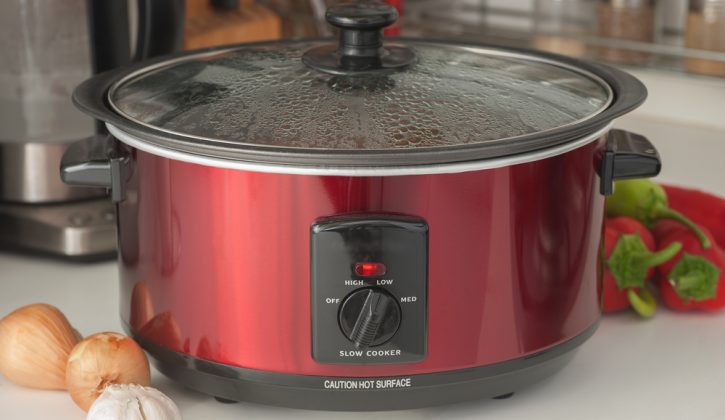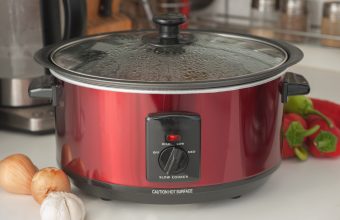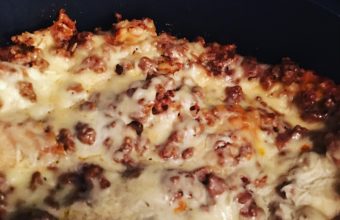- A general rule of thumb is that ‘low heat’ is equivalent to 200°F and ‘high heat’ is equivalent to 300°F. Food cooked on low heat takes twice as long as that which is cooked on high heat.
- Browning meat and sauteing vegetables will add flavour to the final dish and is worth the additional prep time. Meat dredged in flour before browning with yield a thicker sauce in a slow cooker.
- Liquids will not evaporate with this method of cooking. If using a standard recipe, reduce liquids by 20-25% if attempting to make the recipe in a slow cooker. To help reduce excess liquid, remove the lid for the last 30-60 minutes of cooking time, if desired.
- Add tender veggies during the last hour of cooking to avoid them from turning to mush (mushrooms, peas, etc.)
- Know your slow cooker. If you are consistently cooking your foods for shorter or longer times than the recipe specifies, adjust the timing based on your cooker. All slow cookers are made differently so be sure to familiarize yourself with the one you own.
- When cooking chicken, use chicken thighs in place of breasts whenever possible. There is a little extra fat in the thighs, which will help to keep the meat from drying out. Beef is more forgiving as it naturally contains more fat. Inexpensive, tougher cuts do well in a slow cooker; choose stewing beef over sirloin if possible.
- Place longer cooking ingredients (like meats and root vegetables) at the bottom of the slow cooker, and quicker cooking items (like celery and broccoli) on the top where the heat is less direct.
Tagged under: meals,family meals,chili,slow,slow cooker,crockpot,braised,stewed,soups
Category: make-ahead





